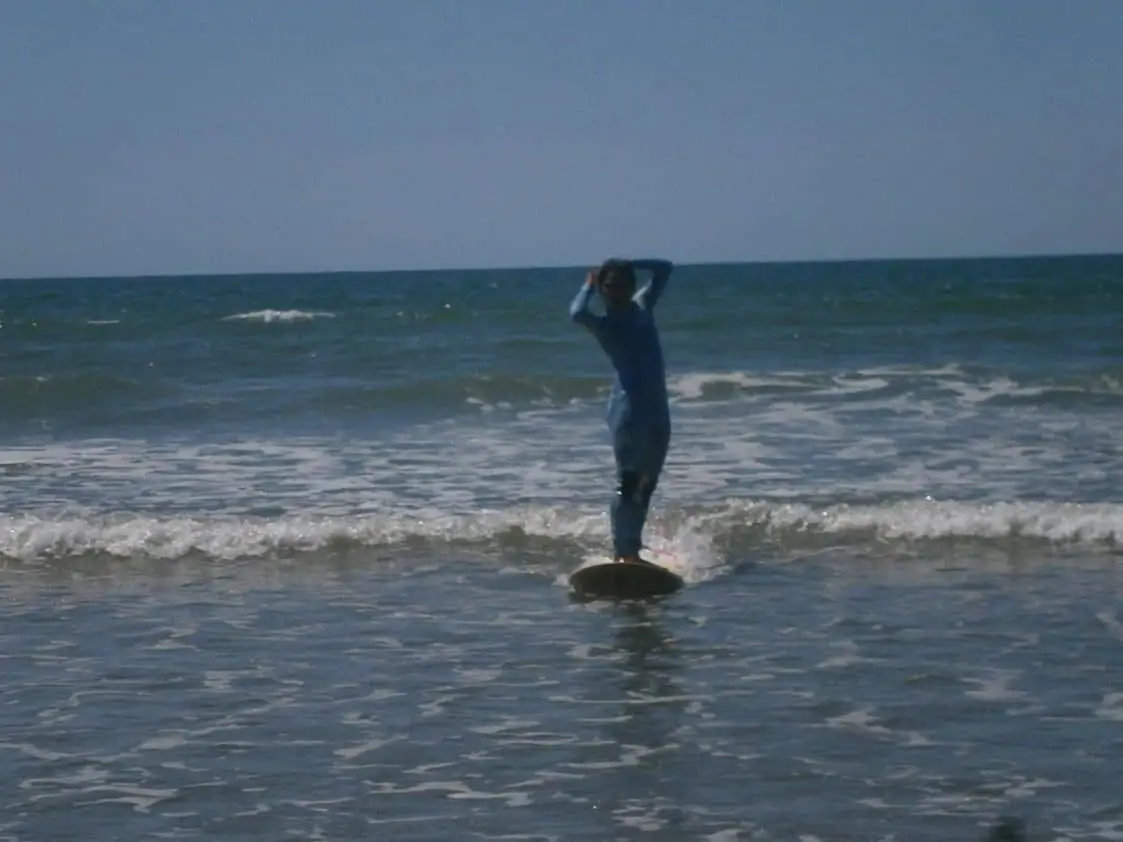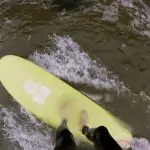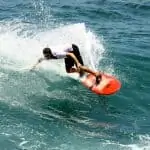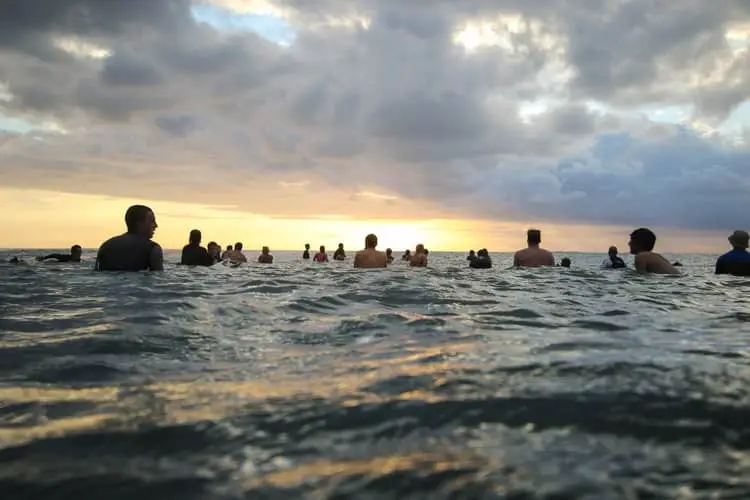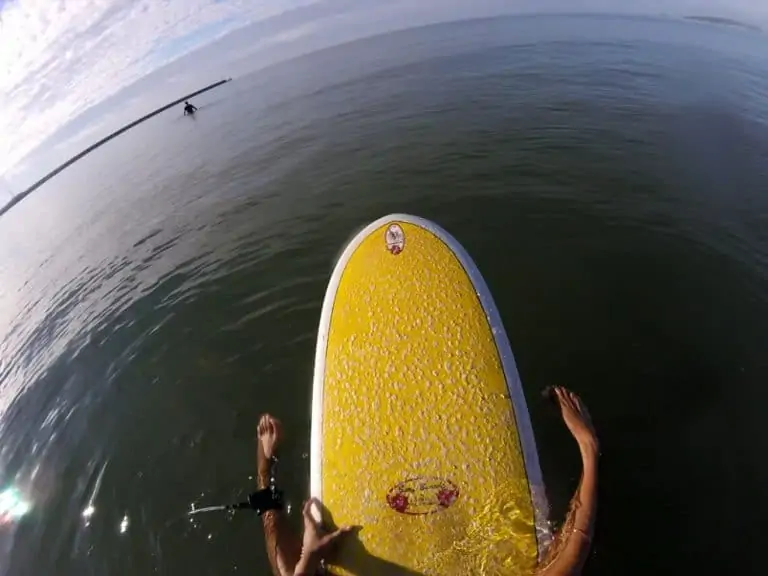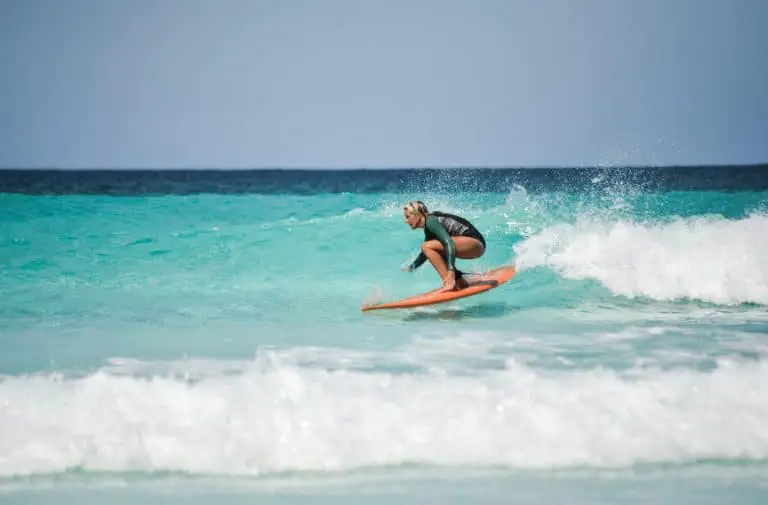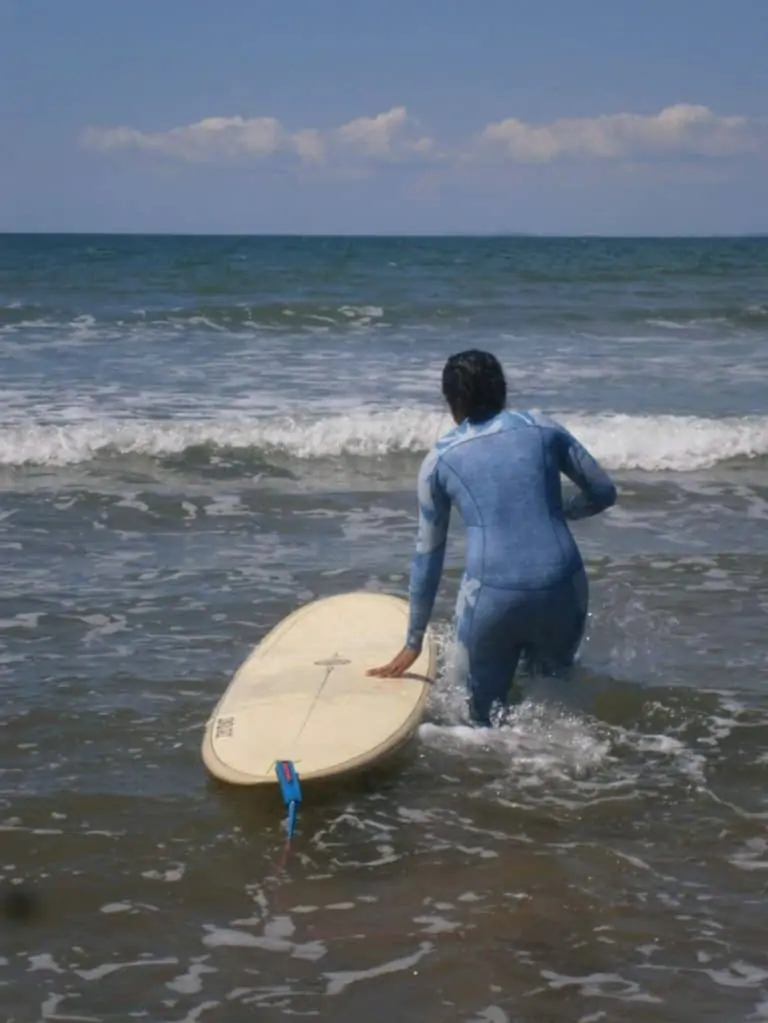How Big of a Wave Do You ACTUALLY Need to Surf?
Since swell for surfing comes and goes very quickly, sometimes we find ourselves looking to surf in tiny waves simply because we have no other option.
It might be the season, your limited time to go surfing, or just that life conspires against us, but we sometimes just need to get wet when the surf is small.
With that said, how big of a wave do you need to surf? As small as you can really think of. Ideally, anything over half a foot on a longboard is possible. Shortboard needs a little bigger but there are caveats to these, as we’ll look at below.
Smallest Waves You Can Surf
As mentioned above, you can really surf just about any kind of ripple if you have the right equipment.
The main factor is the type of board you have as these can open up the number of small-wave options that you have.
As a general rule, the bigger the board, the smaller the wave that you can surf.
This is pretty much common sense in that the bigger the board under your feet, the more planing surface it has in the water and the better it floats you.
One of the main issues with trying to surf in small waves is that the waves have so much less power, meaning that your board will move along the face less quickly and cause more drag.
This will in turn make it ‘bog’ more in the wave and likely lead you to falling off as the board stops gliding along with the wave.
Volume is also a crucial factor in riding small waves successfully, which again links in to how much a board will float you and
To get more into the specifics of each type of board, let’s have at each one in turn below.
Pro Tip: Go Leash-free or Fins-free for More Speed
If you are surfing alone in small waves, or if you are more confident and can control your board well, you may like to surf without a leash.
More advanced surfers often do this when the waves are small since this can help to reduce drag. Given that a surf leash dangles behind you in the water, it slows you down when riding a wave.
This becomes more of an issue in small waves given the noted lack of power and speed.
So, if you take off your leash before heading out, you may find that you get a little extra speed and fun out of the surf.
However, this obviously means that you need to be extra careful as your board can still do damage to others even if the surf is small.
If you are feeling really confident, then you can also try going ‘fins free’ when surfing small waves.
I would recommend a finless board designed for that purpose since they will have channels in the bottom that can help you ride a wave without actual fins.
If you just take the fins out of your standard surfboard, it will make your board almost impossible to ride since they slip and slide all over the place!
If you’re interested in trying a finless board, I have both the Seaglass Albacore (soft foam) and the Seaglass Tuna finless models, although I’d recommend the Albacore as it has a lot more volume and is more fun in small waves.
Types of Board and Smallest Waves You Can Ride
So, if you’re thinking about taking on some really small waves, this table should give you a clear guide as to what you can expect from each surfboard type:
| Surfboard Type | Smallest Waves You Can Ride |
| Shortboard | 1-2 foot |
| Hybrid board (inc. fun boards) | 1 foot |
| Mini Mal (7’0-8’6 in length) | 1 foot |
| Longboard (9ft+ in length) | ½ foot |
| Stand-up Paddleboard (SUP) | ¼ foot |
Shortboards
So a shortboard is the classic type of surfboard, with a pointed nose that narrows sharply and often with a 3-fin set up.
Shortboards are so named because of the length: these boards are generally in the 6 foot range in terms of length, although you can get them anywhere from 4 feet up to about 7 feet, with the smallest of these being for lighter shorter riders and the larger ones being for bigger waves or heavier riders in moderate waves.
The problem with shortboards in small surf is that they are hard work and offer limited float given their narrow template and lower volume.
That said, you can opt for a fish that has a wider template and a bit more volume if you really want to get out in small waves on a shortboard.
The width will definitely help here and fish surfboards are also great fun in waves up to a medium size given how fast and loose they are.
They have a distinctive swallow tail which helps to turn them so look for a wider than average surfboard with a swallow tail and you’ve found yourself a fish surfboard!
If you are keen to surf a shortboard on a small day, check out my dedicated article to small-wave shortboard surfing here!
Hybrid Boards
If you really want to try and do some turns in small waves, a hybrid board is probably your best option.
Hybrid boards are generally shortboards with a wider and thicker template, making them have some more of the paddle power of bigger boards with some of the maneuverability that you’d expect from a shortboard. As mentioned above, fun boards would also count in this category.
Popular hybrid surfboard models include boards like the HyptoKrypto by HS, the Firewire Chumlee, and many more.
These boards will let you catch smaller waves than a standard shortboard due to their practical template.
You can also try to do a few turns on these hybrid boards since their fin set up and design are made to allow for turns, although the general lack of power in small waves definitely makes this for more advanced riders.
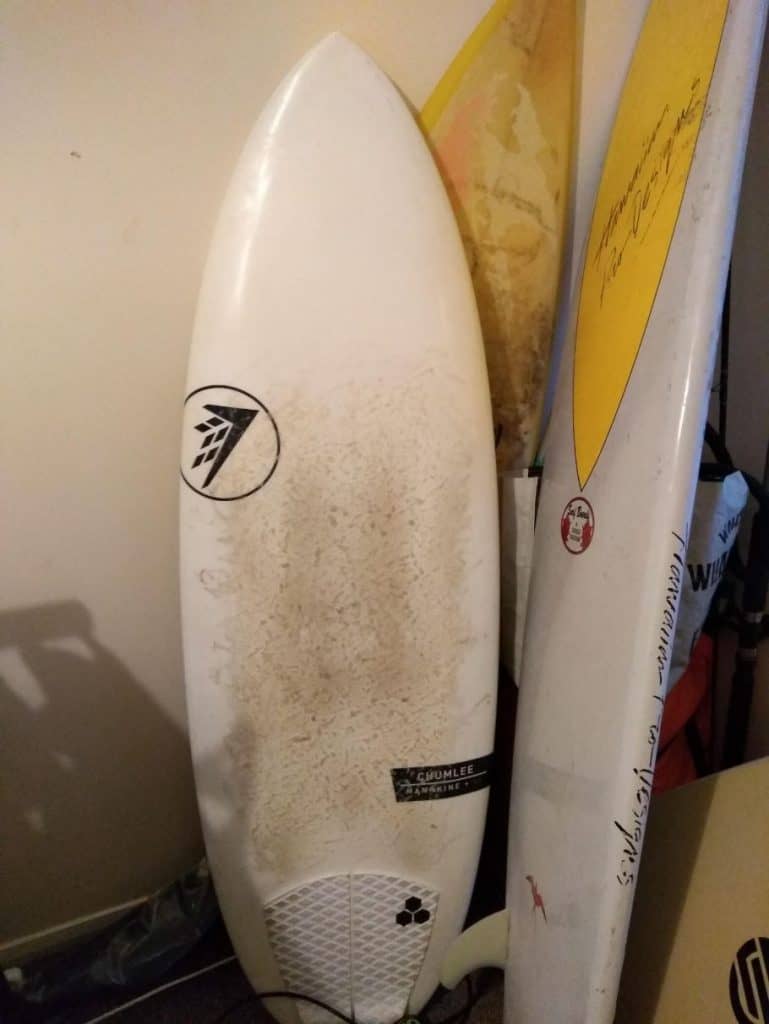
Mini Mal
With a similar smallest wave size to that of hybrid boards, mini mal surfboards (short for ‘mini malibu’) can be a great option.
They pick up waves really well given their generous template and glide along and cruise nicely.
They work well for learning on and are a good bet if you are just starting since they will easily work for waves up to about shoulder height, as well as in waves down to about 1 foot.
The only downside to using mini mal surfboards in really small waves is that they don’t quite have the same float as longboards and are not as maneuverable as hybrid boards, so they really sit in the cruisey/glider type category and are best suited for people looking for a medium-small wave board that you can just have relaxed fun on.
Longboard
Longboard surfboards are the typical board for small wave days and have been for years. Not only are these the classic boards but they’re also a heck of a lot of fun.
Longboards have the very wide, rounded nose and often one large center fin, with many also having two additional side fins.
Longboards have a great amount of planing surface that can carry into and along really small waves.
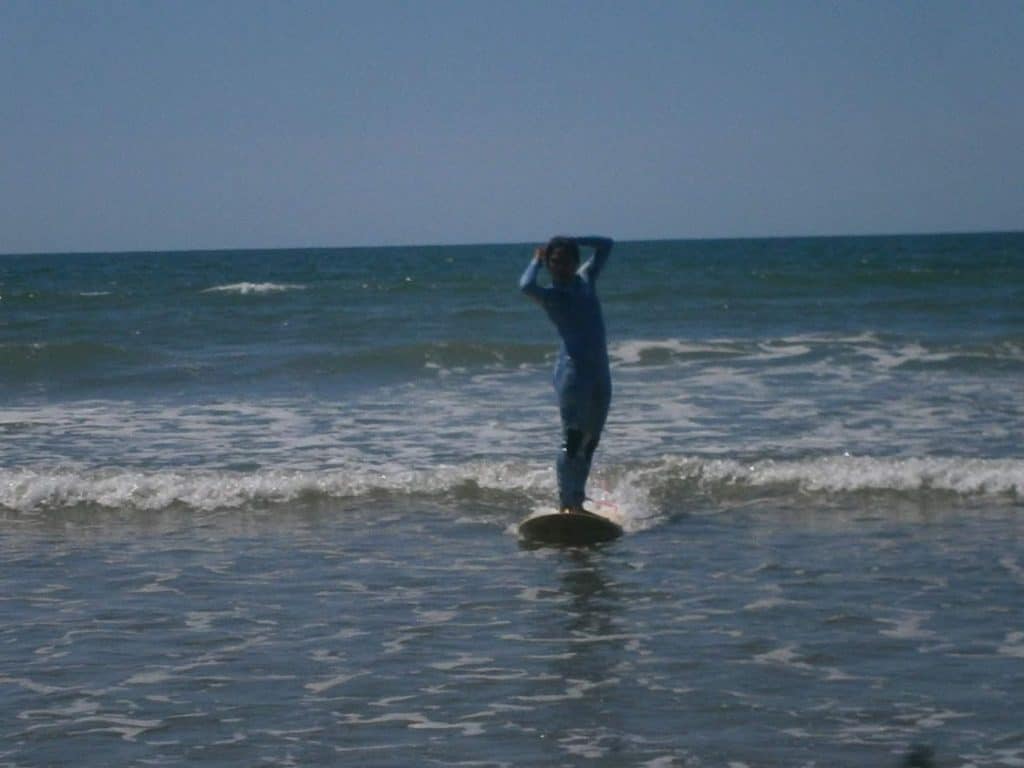
Again, given the size, they are hard to maneuver so you will really be just gliding along on these when trying to rid little waves.
You can try to walk up and down the board but bear in mind that you really need a bit more speed from bigger waves for this.
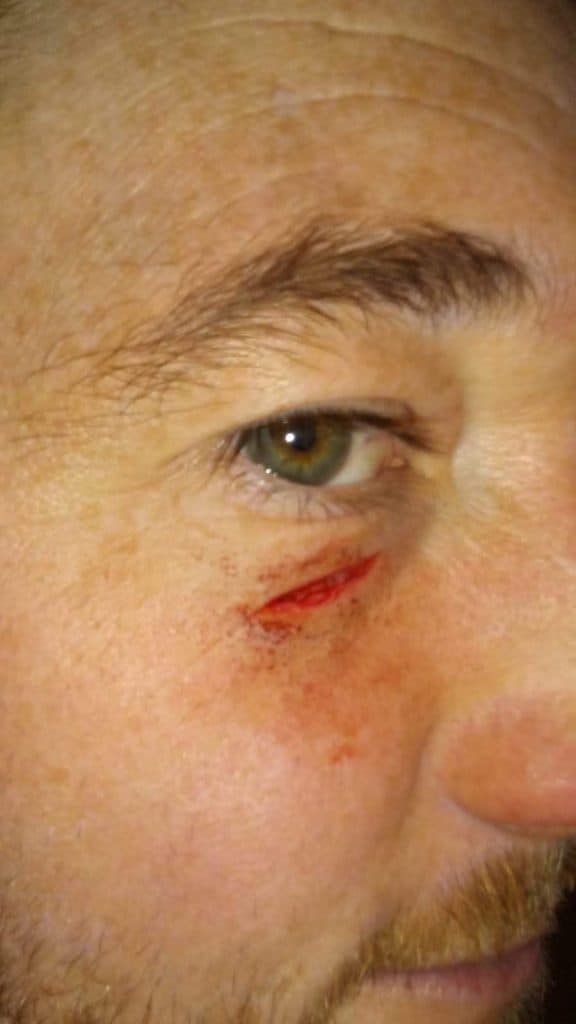
On a personal note, I am not a regular longboarder but, when trying to learn to nose ride in some tiny waves on my wife’s board, I actually suffered probably my worst surfing injury in 20 years!
Being foolish, I tried to walk up to the nose on a ½ foot wave that had very little speed (big mistake) and the board promptly bogged and I fell off as the wave ran off without me.
I fell awkwardly and into the water, only to come up to the tail of the board milimeters from my face; the longboard then proceeded to ‘punch’ me just below the right eye, which immediately popped open like I’d been boxing.
An aborted surf, a ride to the hospital, several stitches and a week or so later and I was back in the surf, with a fully working eye but a bruised ego!
So, remember to take it easy in the small stuff, even if you have a great longboard!
Stand-up Paddleboard (SUP)
A stand-up paddleboard (SUP) takes small wave surfing to the extreme as you can ride waves that are ¼ and up! When I say that, I mean waves that are almost a ripple.
Without repeating myself too much, given the size and volume of a SUP, you will find that you are able to catch and ride the tiniest of waves.
Since you don’t have to perform a pop-up on these boards, you don’t lose that crucial second and keep planing more freely; compare this to riding other standard surfboards where the pop up can slow you down slightly in tiny waves, a small but crucial difference.
I know: some of you might not technically consider SUPs as ‘surfboards’ but they certainly do offer the best wave-riding experience of all small wave surfcraft, hence their inclusion here.
If you are looking for an extreme small-surf day option, you could simply go for an inflatable SUP since these pack away nicely and will float you really well. They’re also on the budget end of the scale in terms of price, unlike some of the more serious SUPs out there ($$$$!).
I can say that my brother has one of these and he often gets out on a summer’s evening with waves or not, just to have a paddle and splash given how fun these boards are. I’ve also had a go on a few of these and can confirm that they are a blast, so don’t write them off until you’ve tried!
Extra Tip: Soft-top foam board
Before finishing, I would be remiss for not saying that a soft-top foam board is a great option for small wave surfing.
I say this because they usually have a fun and generous template and also float really well, likely because of their construction.
Just to be clear, these boards have a soft foam top and a hard plastic ‘slick’ bottom. Although they might look like toys for kids and learners, even more experienced surfers are now turning to them for small-wave days.
More and more companies are making soft-top foam boards in all shapes and sizes, with mini mals the most common but even shortboards are available now from well-known brands like Lost Surfboards.
They are also extremely safe for learners and children, so they have that advantage as well.
The other major bonus of these kinds of boards is that they are a great budget option since their construction and build keeps the price down.
I have had a soft-top foam board of my own for the last year and, being honest, it’s the board I now ride most often (our little secret!) since it really is that much fun.
Extreme Small Wave Options: Performance Soft-top Foam Surfboard
You may also have seen boards like the Catch Surf Beater or their Special 54 model, as well as others by brands like Softech. These can be really good fun on small days as they are designed with small-wave fun in mind!
You will probably notice the added thickness of these immediately so, although they are short, they will feel decidedly different when riding as compared to a standard fiberglass board with a similar template.
In short, don’t overlook these boards for your small-surf option until you have tried one as you will have fun!
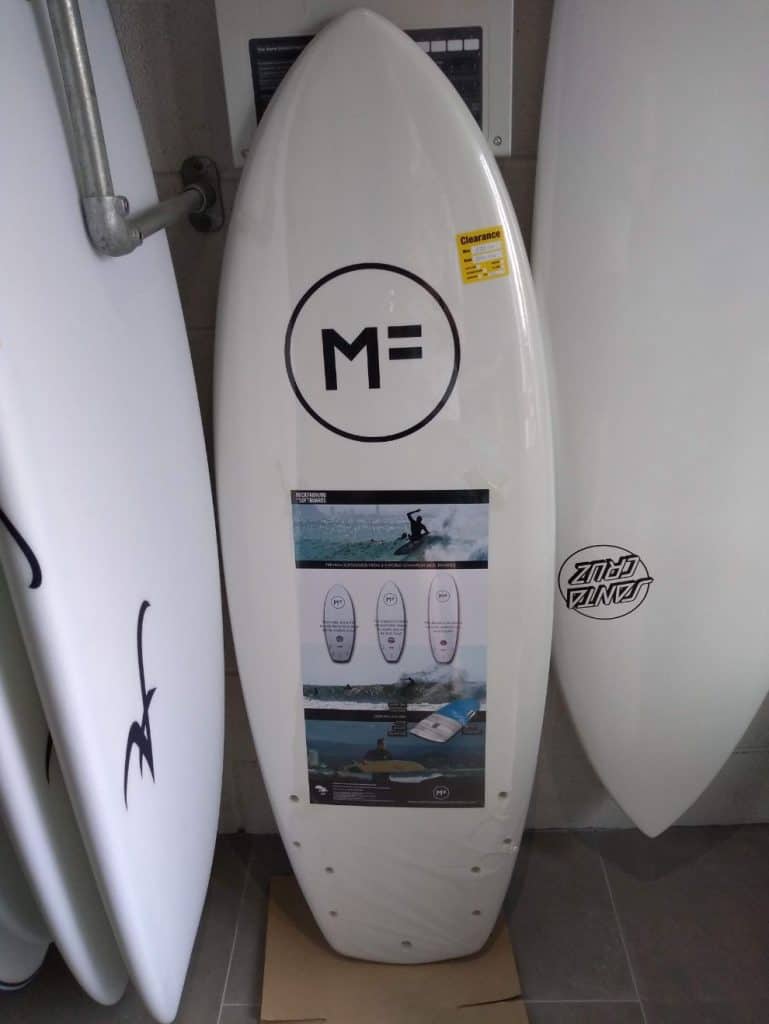
Related Questions
Can you surf ½ foot waves? Yes but only really worth it on a longboard. Even then, check that it is not too shallow as the fin might hit the bottom while you are riding. You will also not really be able to do any turns of maneuvers on waves of this size, so just go for fun and enjoy it.
What is the best time to surf for beginners? Early morning when there are few crowds but still with people around for safety since there is ‘safety in numbers’ when out in the surf. Early mornings also usually have lighter winds.
Be sure to check the tide, too, as this can play a big part, depending on where in the world you are surfing.
